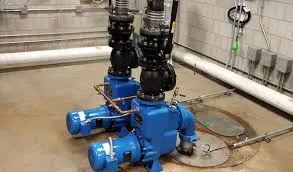English
- Afrikaans
- Albanian
- Amharic
- Arabic
- Armenian
- Azerbaijani
- Basque
- Belarusian
- Bengali
- Bosnian
- Bulgarian
- Catalan
- Cebuano
- Corsican
- Croatian
- Czech
- Danish
- Dutch
- English
- Esperanto
- Estonian
- Finnish
- French
- Frisian
- Galician
- Georgian
- German
- Greek
- Gujarati
- Haitian Creole
- hausa
- hawaiian
- Hebrew
- Hindi
- Miao
- Hungarian
- Icelandic
- igbo
- Indonesian
- irish
- Italian
- Japanese
- Javanese
- Kannada
- kazakh
- Khmer
- Rwandese
- Korean
- Kurdish
- Kyrgyz
- Lao
- Latin
- Latvian
- Lithuanian
- Luxembourgish
- Macedonian
- Malgashi
- Malay
- Malayalam
- Maltese
- Maori
- Marathi
- Mongolian
- Myanmar
- Nepali
- Norwegian
- Norwegian
- Occitan
- Pashto
- Persian
- Polish
- Portuguese
- Punjabi
- Romanian
- Russian
- Samoan
- Scottish Gaelic
- Serbian
- Sesotho
- Shona
- Sindhi
- Sinhala
- Slovak
- Slovenian
- Somali
- Spanish
- Sundanese
- Swahili
- Swedish
- Tagalog
- Tajik
- Tamil
- Tatar
- Telugu
- Thai
- Turkish
- Turkmen
- Ukrainian
- Urdu
- Uighur
- Uzbek
- Vietnamese
- Welsh
- Bantu
- Yiddish
- Yoruba
- Zulu
Telephone: +86 13120555503
Email: frank@cypump.com
Sep . 02, 2024 04:46 Back to list
High-Quality Casting Components for Slurry Pumps
Manufacturing Components for Slurry Pumps through Casting An Overview
Slurry pumps are pivotal in various industries, including mining, construction, and chemical processing. These pumps are specifically designed to handle abrasive and viscous materials, which necessitates the use of robust components capable of withstanding harsh operating conditions. One of the most effective methods for manufacturing these critical components is through casting, a process that combines versatility, cost-effectiveness, and high precision.
Casting involves pouring liquid material into a mold to create solid components. This technique allows for the production of complex geometries that would be difficult or impossible to achieve using traditional machining processes. For slurry pumps, the primary materials used in casting are iron, bronze, and various alloys. Each material possesses unique properties that contribute to the durability and efficiency of the slurry pump components.
One of the significant advantages of cast materials is their ability to handle high levels of wear and tear. Slurry pumps are often subjected to abrasive solids that can cause significant erosion over time. By using materials specifically formulated for hardness and resistance to abrasion, manufacturers can enhance the lifespan of slurry pump components. For instance, high-chrome iron, known for its excellent wear resistance, is commonly cast into impellers and liners, which are crucial parts of slurry pumps.
'manufacturing components for slurry pumps through casting ...'

The casting process begins with the design of the component, followed by the creation of a mold. Molds can be made from various materials, including sand, metal, or ceramic, depending on the desired finish and application. The choice of mold affects the surface quality and overall precision of the finished products. Once the mold is prepared, molten metal is poured into it, where it cools and solidifies to form the desired shape.
After casting, the components undergo several post-processing steps, including cleaning, machining, and heat treatment. These processes ensure that the components meet the stringent specifications required for slurry pump applications. Machining involves removing excess material to achieve precise dimensions, which is essential for fitting parts together seamlessly and ensuring optimal performance. Heat treatment can further enhance the mechanical properties of the cast materials, improving hardness and resistance to deformation under stress.
Quality control is another critical aspect of manufacturing slurry pump components through casting. Thorough testing and inspection processes are employed to identify any defects, such as porosity or inclusions, that could compromise the structural integrity of the parts. Non-destructive testing techniques, such as ultrasonic or X-ray inspections, are commonly used to ensure that the components meet the requisite standards before they are put into service.
In conclusion, manufacturing components for slurry pumps through casting provides significant advantages in terms of material properties, design flexibility, and cost-effectiveness. As industries continue to evolve and face increasing demands for efficient and reliable pumping solutions, the importance of specialized casting techniques will only grow. Advances in metallurgy and casting technology may lead to even more resilient materials, ultimately enhancing the performance and longevity of slurry pumps. This not only benefits manufacturers but also end-users reliant on these crucial systems for their operations.
-
ISG Series Vertical Pipeline Pump - Chi Yuan Pumps Co., LTD.|High Efficiency, Energy Saving, Low Noise
NewsJul.30,2025
-
ISG Series Vertical Pipeline Pump- Chi Yuan Pumps|High Efficiency&Low Noise
NewsJul.30,2025
-
ISG Series Vertical Pipeline Pump-Chi Yuan Pumps Co., LTD.|High Efficiency&Energy Conservation
NewsJul.30,2025
-
ISG Series Vertical Pipeline Pump - Chi Yuan Pumps Co., LTD.|Advanced Hydraulic Design&Energy-Efficient Solutions
NewsJul.30,2025
-
ISG Series Vertical Pipeline Pump - Chi Yuan Pumps Co., LTD.
NewsJul.30,2025
-
ISG Series Vertical Pipeline Pump - Chi Yuan Pumps Co., LTD.|energy-efficient fluid handling&industrial durability
NewsJul.30,2025










